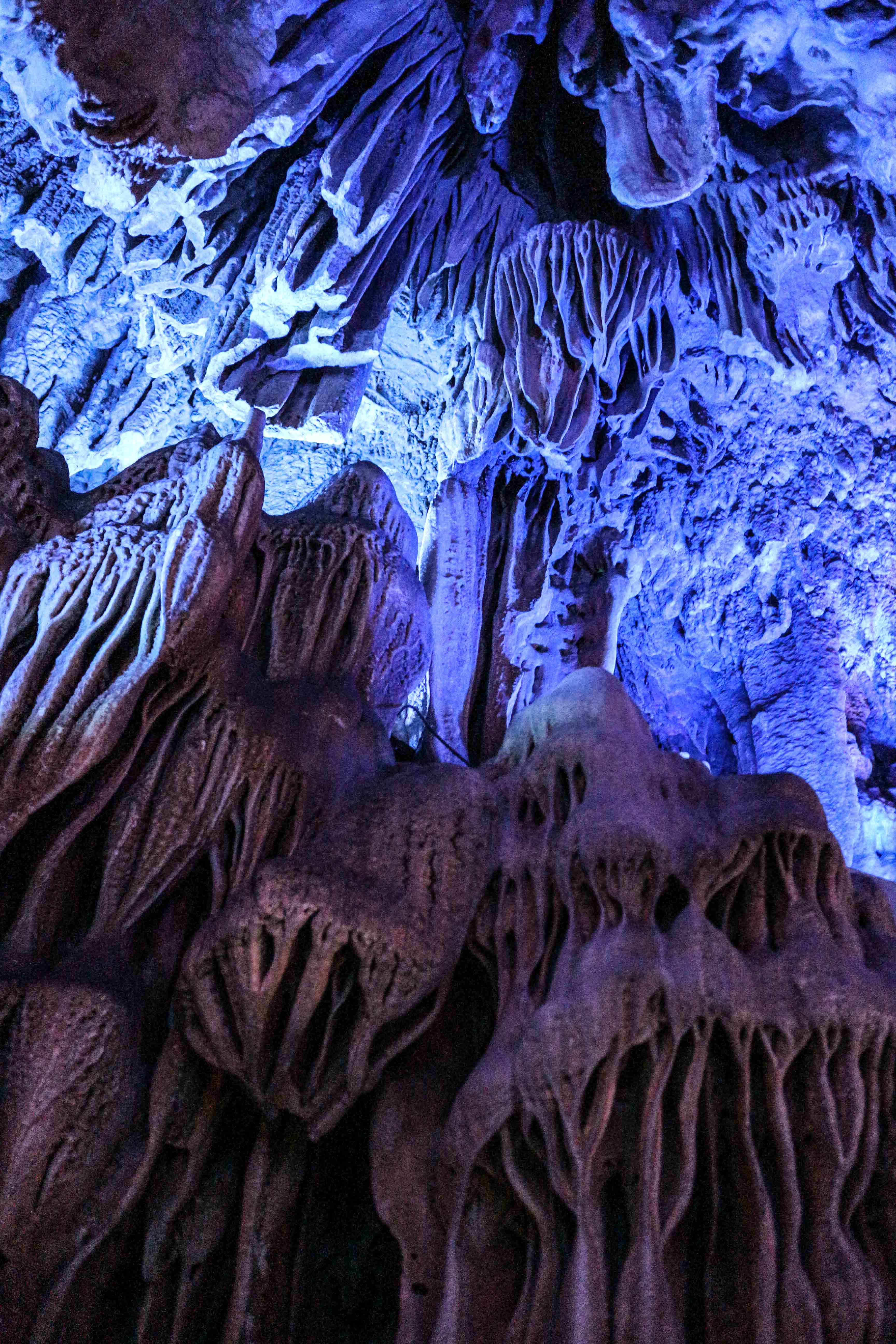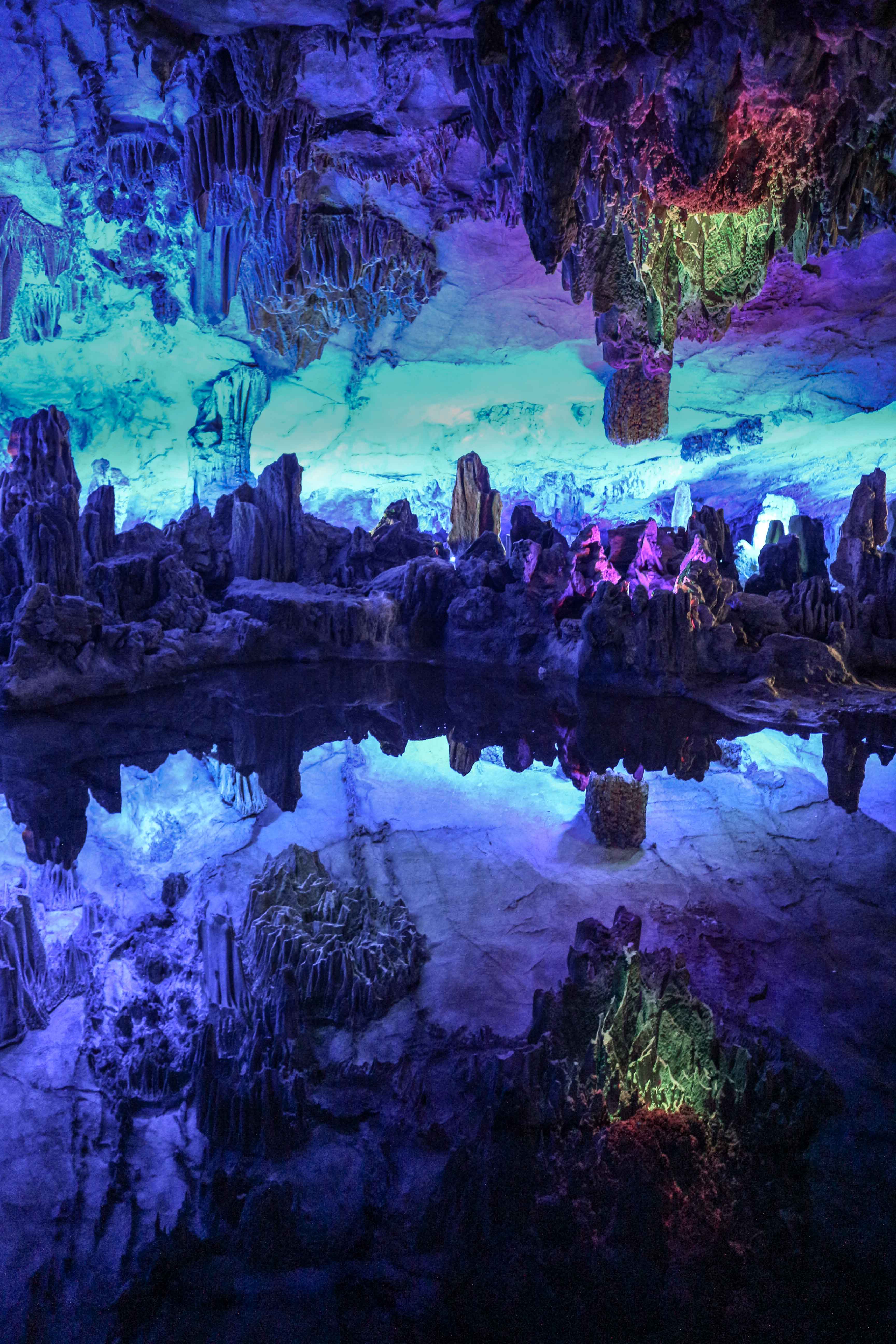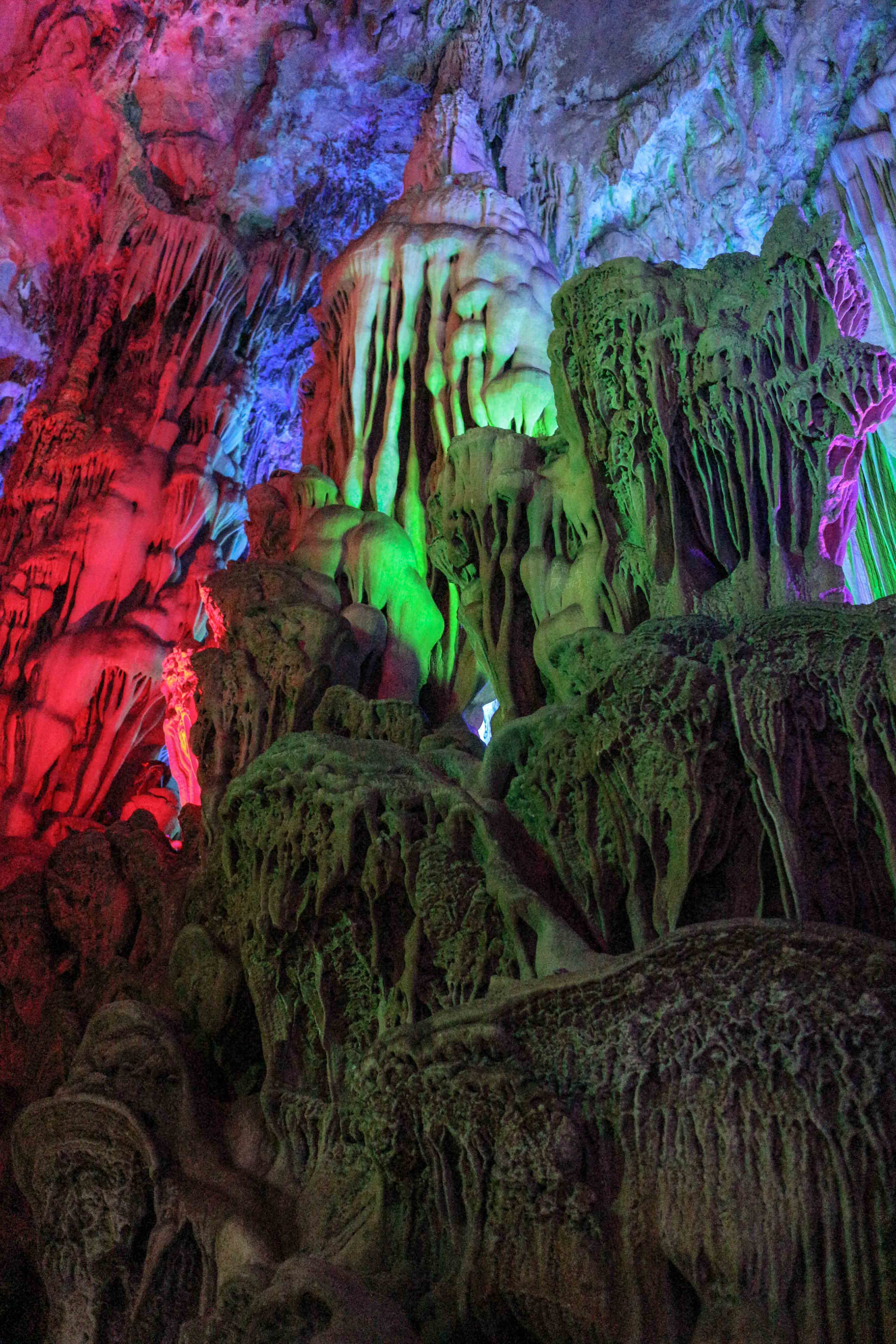I know nature is the world’s best artist, but sometimes I need a little reminder. Guilin had reminders dripping from the sky, and nowhere was this more literal than at its Reed Flute Cave. Formed over millions of years, the stalactites and stalagmites here could make Michelangelo green with envy, as they show off the surprising fluidity of rock.
There are no reeds in the cave – this name actually comes from the reeds growing outside it. But what’s inside is so much better. The stalactites and stalagmites both form from dripping water inside the cave, that carries dissolved limestone with it. When the water evaporates, the limestone is left behind and slowly builds up. Stalactites hang down from the ceiling, and are formed before the water can drop down onto the floor. Stalagmites grow upwards from the water that falls to the floor. When both grow long enough to join each other, columns form.
Dripping water continues to both erode and build up the stalactites and stalagmites. This opposing nature can be seen in the twisted ripples that are left behind, and is only possible with rock types that dissolve in water. Limestone is such a rock, as it is composed of the water-soluble mineral calcium carbonate. In fact this solubility is responsible for much of Guilin’s awesome topography.
Reed Flute Cave has been pimped up with various coloured lights to show off the rocks, so the result is really a mingling of nature’s and man’s artistry. In some spots the lighting is overdone, but at others it emphasizes the surrealism of the cave. In fact, Gaudi might have joined Michelangelo in a fit of jealousy. The spot is fittingly also called ‘The Palace of the Natural Arts’.
Although known since the Tang dynasty in the 6th century, the cave was surprisingly forgotten for a long stretch of time. Then in the midst of the horrors of World War II, refugees fleeing Japanese soldiers took shelter within it and had a moment of startling beauty in the face of adversity. The cave officially opened as a tourist hotspot in the 1960s.
Next page – Top tips for visiting Reed Flute Cave


